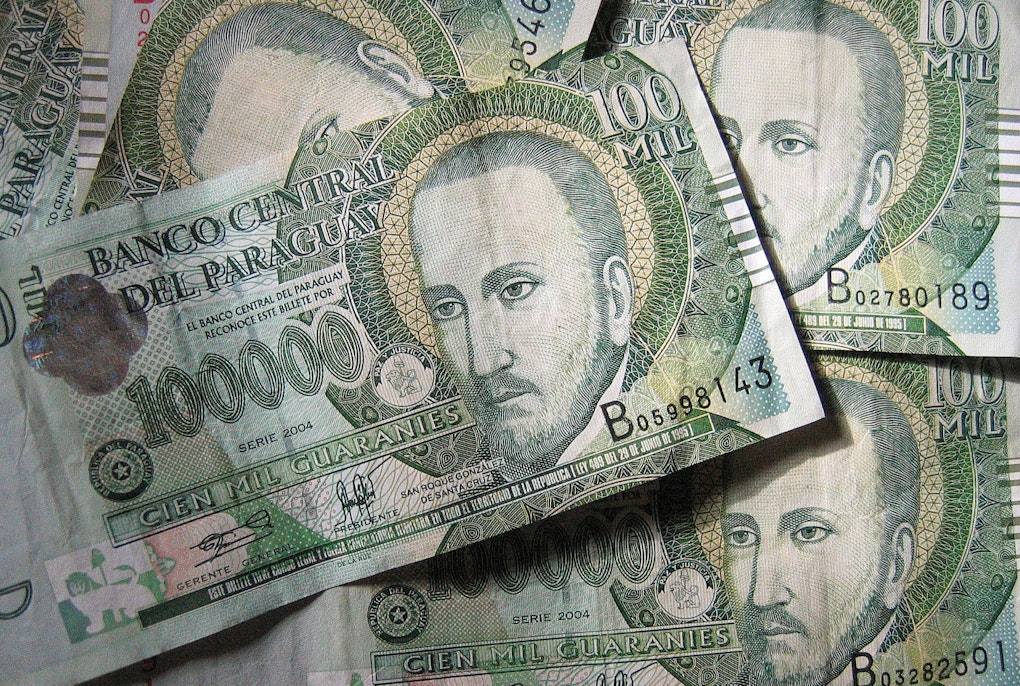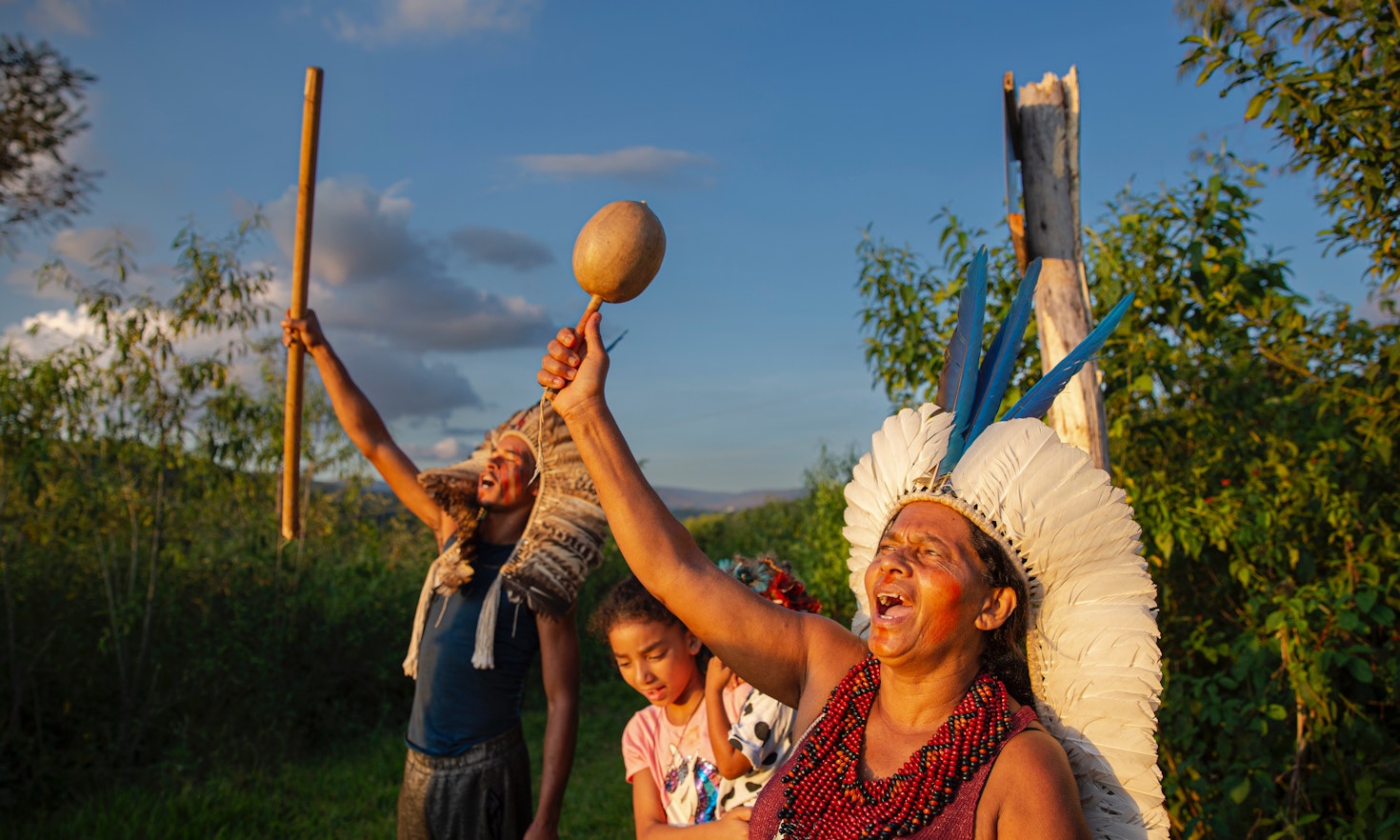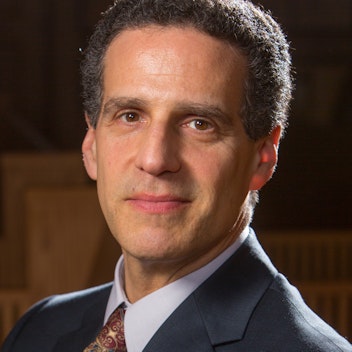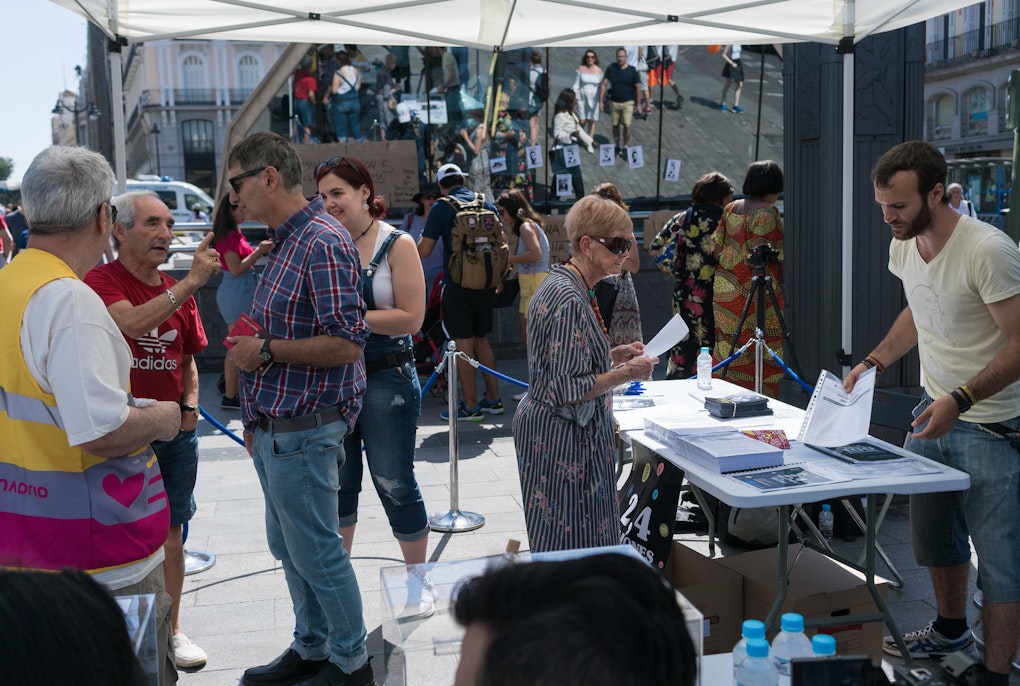
Unpuzzling Paraguay: politics, drug trafficking, indigenist and land struggles
 Mattia Bottino
Mattia Bottino
The central littoral of what today we call Brazil, and Bahia in particular, was the place where, according to classic historiography, Portuguese navigators disembarked in 1500. It is Pêro Vaz de Caminha - a fidalgo and fleet scrivener on Pedro Álvares Cabral’s expedition - in his Letter to Manuel I of Portugal, who impressively described the first astonished observations of the Portuguese crew at their sight of Brazil’s pre-Columbian populations of the tropical coasts. Here are some evocative excerpts:
They are of a dark brown, rather reddish color. They have good, well-made faces and noses. They go naked, with no sort of covering. They attach no more importance to covering up their private parts or leaving them uncovered than they do to showing their faces. They are very ingenuous in that matter. […] They seem to be such innocent people that, if we could understand their speech and they ours, they would immediately become Christians, seeing that, by all appearances, they do not understand about any faith.
As it is very well-known, these words of amazement soon made way for the endless exploitative, enslaving, and genocidal policies of the European settlers towards Brazil’s native peoples. The firsts to be met by the Portuguese were the Tupi, a large label that refers to different tribes that, heading from the Amazon rainforest, migrated and populated the littorals. Intentional and unplanned (namely diseases) was the assimilation and then the extermination of the vast majority of the Tupi peoples. It is sufficient to look at the data provided by the Fundação Nacional do Índio (FUNAI), which reports the dramatic decline of pre-Columbian populations from the 16th century onwards: in 1500 they totaled around 3 million, dropped to 70 thousand in the 1950s, and there were no more than 900 thousand in 2010 that, at that time, represented 305 ethnicities who spoke 274 different languages. Still, the - most often forced - miscegenation of Portuguese men and Indigenous women concurred to mold and co-define the brasileiro for the following centuries. For, if on the one hand the Bandeirantes - slavers and adventurers of early colonial Brasil mostly from São Paulo (therefor Paulistas) and partly of European origin only - violently and cunningly contributed to the deportation and enslavement of the Indigenous peoples, the mass and sometimes the even leaders of the troops themselves were of mixed origin, the caboclos, the sons of a white and an Indigenous parent. Besides the Portuguese language, they spoke the Geral Paulista language, a Tupi-based language that prospered over Portuguese well through the 18th century, in what may be called Paulistânia. Therefore, in the light of the multiple forms of annihilation perpetrated through colonization, the Indigenous legacy in Brazil has survived more consistently in the North, throughout the Amazon River basin. Naturally, it still emerges in several forms in arts, culinary practices, linguistic references, and religious traditions, but, more than anything, as the sociologist Gilberto Freyre tells in his book Casa-Grande e Senzala, in the incontestable fact that “every Brazilian, even the pale, with blond hair, carries in the soul, when not in the soul and the body, in the shadow, or at least the spot, of the Indigenous and/or the Blackman”. However, fascinating as this description may be, the current reality concerning the Povos indígenas continues to be stained in blood, as does Brazil’s history of interethnic and interclass relations.
For several reasons, it is possible to say that the extermination of Indigenous communities in Brazil have not vanished. Rather, as pointed out by the anthropologist Darcy Ribeiro in his work Os índios e a civilização: a integração das populações indígenas no Brasil moderno, between 1900 and 1957 - thus quite a long time after colonial Brazil - around 87 Indigenous populations were wiped out soon after their contact with modern Brazilian society, either because of blatant ethnocide or the propagation of diseases. The decrease mainly affected isolated and less contacted groups. In the last decades these ethnocidal processes acquired other modes, generated by the limitless expansion of mining, cattle breeding, agrobusiness and timber extraction towards Central-West and North Brazil. The end of the military dictatorship in 1985 and the recognition of the rights dos ĺndios in art. 231 of the Federal Constitution has not been effective in preserving the lives of Brazilian indígenas. Since then, the negligence towards Indigenous’ rights has been growing due to the persistent disrespect of Indigenous sites - both already demarcated and those awaiting demarcation -, and to the violent attacks against Indigenous communities perpetrated by fazendeiros (the landowners of fazendas, vast plantations), garimperios (autonomous and irregular prospectors of minerals), and grileiros (land grabbers).
Just to mention two contemporary emblematic cases of persecutory and ethnocidal occurrences: the Guarani-Kaiowá and the Yanomami cases. Since the 1980s the Guarani-Kaiowá people in Mato Grosso do Sul has been subjected to a silent and steady genocide, also called “Kaiowcide”. The Guarani-Kaiowá people - slightly more than 30 thousand individuals in Brazil - continue to be persecuted, intimidated, and killed by the pistoleiros and jangunços (hired militia members) contracted by landowners. The reason: further extension of the large-scale cultivation of sugar cane and soy, as well as cattle breeding, all of which are among Brazil’s most exported products. Indeed, it is the 2020 Report on the “Violence against Indigenous peoples in Brazil”, drafted by the Conselho Indigenista Missionário, that refers to a cenário de genocídio (genocidal scenario) concerning the Guarani-Kaiowá. For instance, as shown by the cartographical platform (Cartografia dos Ataques Contra Indígenas) that collects data about the violence against the Povos indígenas, 1313 murders of Indigenous Brazilians have been registered in the last three decades, with the Guarani-Kaiowá representing almost one fourth of the total number. Also, Mato Grosso do Sul, where 894 suicides of Indigenous people have been reported between 2000 and 2019, accounts for 63,7% of reported suicides among Indigenous communities in Brazil (1404) in the same period, affecting mainly, once again, the Guarani-Kaiowá. Similarly, since the second half of the 20th century, the Yanomamis (roughly more than 28 thousand individuals) - isolated in the border region between the Brazilian states of Amazonas and Roraima, and Venezuela - have been victim of the physically and culturally deteriorating contact with Brazilian mainstream society. After the first contacts conducted through evangelizing and healthcare missions, the Yanomamis were threatened by the enlargement of the infrastructural frontier cutting through their ancestral lands. The latter paved the way for a savage corrida do ouro (gold rush), with over 40 thousand - often illegal - prospectors flocking to the region, causing the spread of diseases, exposing the Yanomamis to countless socio-sanitary risks, malnutrition, and aggressions of the most brutal kind perpetrated by garimpeiros. For the Yanomamis, if all of this does not constitute genocide, it is surely a humanitarian tragedy.
The Bolsonaro administration has notoriously been unreceptive, if not overtly inimical towards the claims of the Indigenous peoples of Brazil. Bolsonaro’s government negligence with respect to COVID-19 pandemic, heavily impacted Indigenous communities who were delivered enormous quantities of chloroquine as (useless) remedy against the virus. Once again in their history, Brazil’s indígenas are being devasted by yet another disease. Also, through the introduction of the Instrução Normativa nº 9 by the FUNAI in April 2020, plantation owners are now able to obtain certification of private properties in Indigenous territories awaiting demarcation. Since that date, roughly 50 Indigenous peoples have been affected by the scramble for the land, and 250 thousand hectares have been handed down to the hands of fazendeiros, garimpeiros, and grileiros.
Despite all this, the indígenista movement, in view of 2022 general elections, has never been so organized, and Indigenous candidates, so numerous. In fact, in 2014 only 84 candidates were indígenas, in 2018 the figure rose to 134, while in 2022 178 candidates self-declared as indígenas, 58 of whom are running for the Câmara dos Deputados. Nonetheless, the declaration of belongingness to the Indigenous group remains at times debatable and even possibly forged since this group affiliation depends on an ethno-racial self-identification. This is the case of former Brazilian Vice-president Hamilton Mourão (Bolsonaro administration), who in 2018 registered as Indigenous but this year, as a candidate for the Senate representing Rio Grande do Sul, self-declared as white. Still, it is remarkable to highlight that for the first time in general elections in Brazil, a Bancada indígena made of 30 Indigenous candidates representing 31 peoples is coordinated as a part of the Campanha Indígena* 2022, organized by the *Articulação dos Povos Indígenas do Brasil (APIB). 12 of them are running for the Congress (Deputados federais), while 18 are running for different state-level legislative assemblies (Deputados estaduais). Interestingly, the slogan of their campaign is “Aldear a política”, that is to say: rescaling politics to the level of traditional communities. Among all the issues mentioned so far, Indigenous candidates lament the new anti-Indigenous bias of the FUNAI which, following the Bolsonario agenda, is no longer representing the Povos indígenas but operates in favor of agrobusiness (ruralistas) interests. Despite all the trials and tribulations that the Indigenous peoples have been subjected to throughout past centuries - including the last decades of democratic regime – this underrepresented group is now reverting the modes of politics in Brazil and regaining a say over the issues which concern their ancestral lands, raising political participation, as they say, por um parlamento cada vez mais indigena (for a Parliament more and more Indigenous).
For, if since the times of invasion/colonization Brazil and its Indigenous-inhabited territories have long been seen as terra nullius (belonging to no one), the Povos indígenas have never ceased to fight for their right to exist. Indeed, it is now fascinating to recall the timeless and evocative cry of resistance attributed to Sepé Tiaraju - a Guarani leader that lived in a Jesuitic mission in the 18th century in Rio Grande do Sul and who opposed the transfer of the Sete Povos das Missões to Spanish dominions and the subsequent remotion of thousands of Guarani from their land - : “Nossa riqueza é a nossa liberdade. Essa terra tem dono e não é nem português nem espanhol, mas Guarani” (Our richness is our freedom. This land has its own master, and this is neither Portuguese nor Spanish, but Guarani.”)

This content is licensed under a Creative Commons Attribution 4.0 International license.

 Mattia Bottino
Mattia Bottino
 James A. Gardner
James A. Gardner
 Erika Schläppi
Erika Schläppi